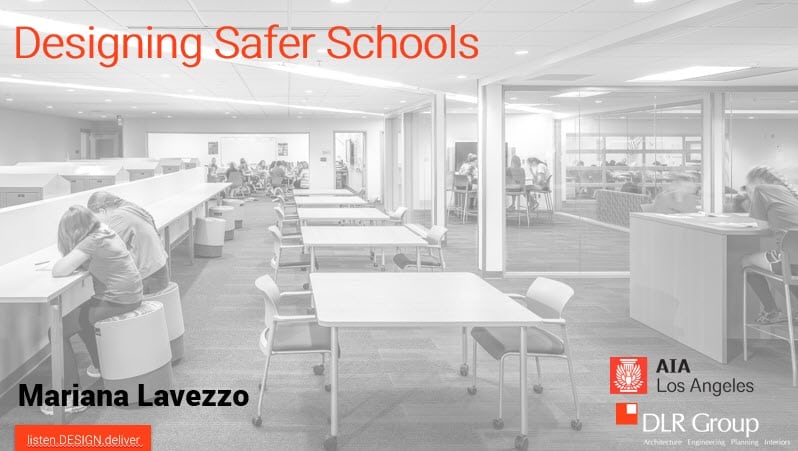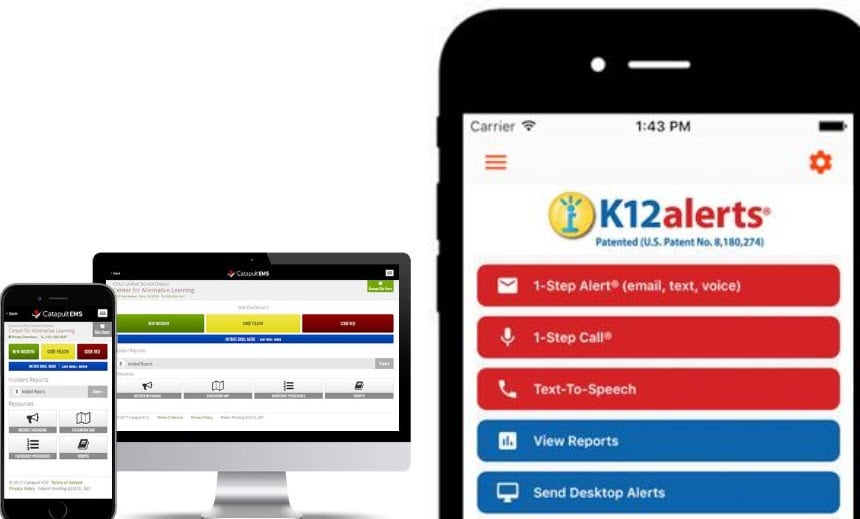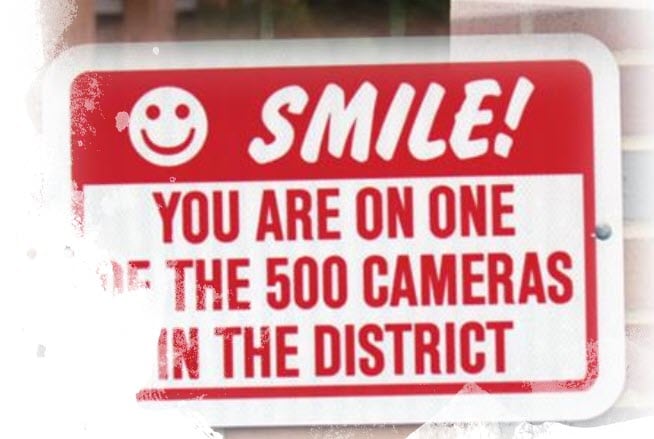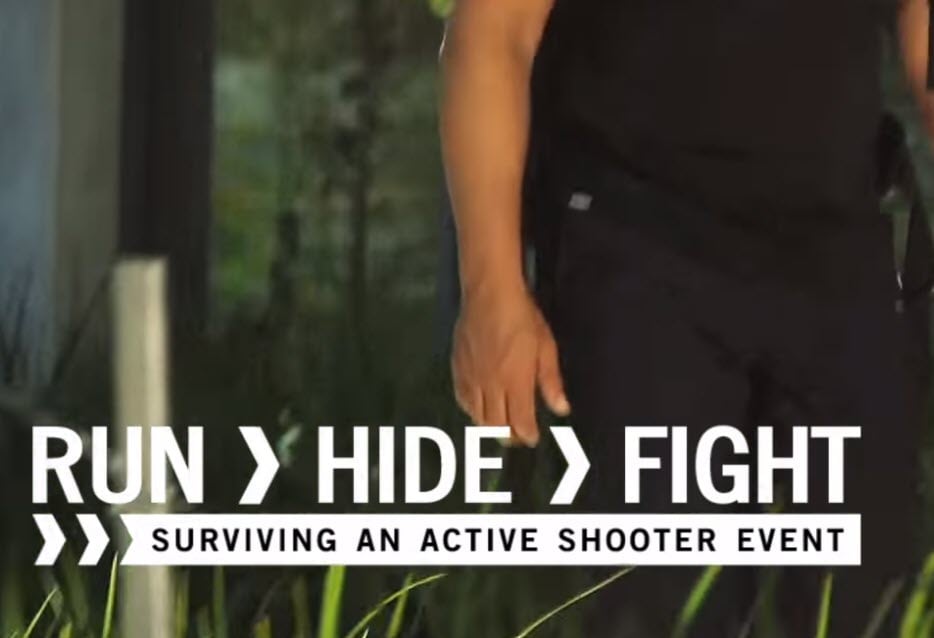On Thursday, August 23rd, AIA|Los Angeles hosted a panel discussion on designing safer schools in an era of ever-increasing gun violence featuring representatives from the architectural, technology, school administration, parents and social work profession. With nearly 250 school shootings since 2012, the importance of having safer schools cannot be minimized and it will take collaboration from many disciplines to coordinate all of the best practices into the goal of having safer schools for our children.
The panel was led by Michael Pinto, Principal from NAC Architecture and Mariana Lavezzo, K12 Educational Designer from DLR Group. Also on the panel was Mike Dannenberg, Associate Principal with Vantage to discuss technology and security, Melissa Faynsod, a licensed Clinical Social Worker and consultant, Gloria Martinez, elementary vice president for United Teachers Los Angeles (UTLA), Rocio Ramirez, PTA Vice President of Programs at Garvanza Elementary School.
Designing Safer Schools
Michael Pinto and Mariana Lavezzo kicked off the panel discussion with a short presentation that looked at:
- How has the approach and design of educational institutions changed or being re-imagined in the wake of the tragic regularity of mass shooting events?
- How can design improve visibility and help with surveillance and crime prevention?
Technology and Security Planning for Safer Schools
After Mariana’s presentation, Mike Dannenberg focused on how technology and security contribute to safer school design. His key topics included:
- Planning starts early
- Entrance control and visitor management
- Information distribution through alerts and notifications
- Surveillance and access control
- Process and procedure review
The first part of Mike’s presentation covered technology and security planning, and his key message was that “planning starts early.” His recommended first step was to conduct a professional assessment of property and safety procedures, and to document deficiencies in the current plan and equipment.
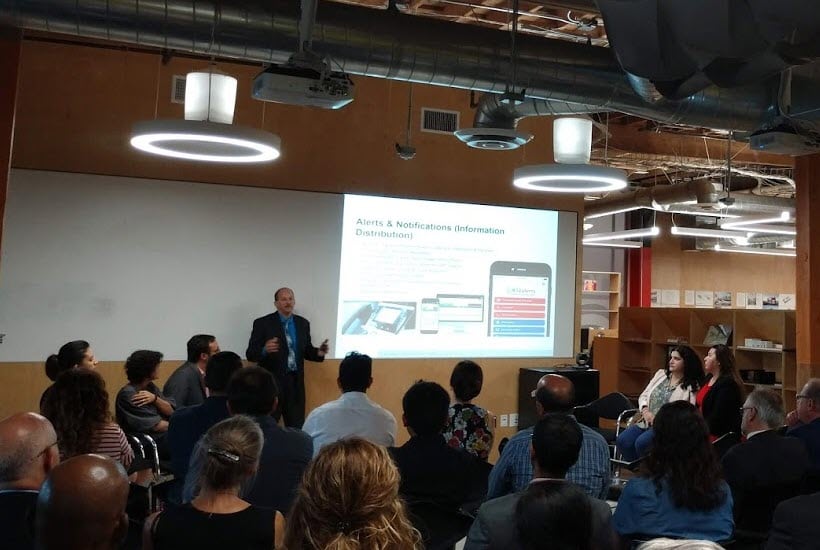
Mike Dannenberg from Vantage Presenting on Technology and Security Planning for Safer Schools
Mike’s top 8 planning tips include:
- Be aware of surrounding buildings, freeways and environment
- Check the sex offender registry database and CAP Index crime risk report for your area to understand external threats
- Make sure the school communication backbone is robust and working
- Document current protocols for action and events, and review with staff regularly
- Training for staff and students to ensure best response outcomes is critical
- Design to accommodate technology within the building aesthetics
- Use environmental design as a deterrent to crime
- Pay attention to lighting design and landscaping to minimize hidden and unlit areas
Most importantly, Mike stressed that it is essential that technology and security design is included early in the facility planning process when it can be proactive instead of reactionary.
Entrance Control and Visitor Management
Entrance control begins at begins literally at the front door. Safer schools are designed with external bollards, barriers or a natural feature at the entrance to deter vehicles from being able to drive through the door. It is also important to route foot traffic through a single point. Vehicular traffic should be controlled near the entrance and only bus drop-offs should be allowed near the front door. The final line of defense is to have adult staff stationed near entrances and exists for casual monitoring at the beginning and end of the day.
From a visitor management standpoint, the most important deterrent is a reception door release and intercom system. In addition, having a visitor check-in procedure which includes drivers license identification, positive identification with cross references to police database and a temporary badging system.
Other procedures include the ability to limit classroom visibility or to block out any views from the front door. Bulletproof glass and shatter-resistant films are also good measures to minimize the impact of weapons and provide additional response time for occupants to react and get to safety. Schools should have procedures and a system for classroom lockdowns, including sheltering in place. Finally, duress alarms or panic buttons are sometimes deployed in the classrooms, front desk or used by the staff in the means of smartphone applications.
Information Distribution Through Alerts and Notifications
The ability to mass notify the building, campus, staff and parents is another way to make schools safer. Having phones in every classroom allows the staff to communicate with each other and with the front office.
Surveillance and Access Control
Cameras are an important line of defense, but unless they are actively monitored they more valuable as a visual deterrent and for use in post-event forensics. Sightlines should provide clear views of entrances, drop off, parking areas and normally unoccupied areas. Using motion triggers on cameras will help detect movement around areas where no one is expected. Procedures and permissions should be set up to allow police and first responders to view live video feeds when required.
From an access control standpoint, there should be a limited number of entrance points and card access control hardware should be used for door monitoring and tracking. Many schools are adding panic hardware in the classrooms and include in-room remote door locking.
Process and Procedure Review
Most schools already have Emergency Operations Plans, but it is important to review and update them on an annual basis. It is also critical for school staff to review the procedures and conduct school-wide training with dynamic drills and scenario re-creation on a regular basis.
While no one thinks it will happen to them, active shooter training for staff and students should be included in your plans. Ready.gov has some great resources for tips on dealing with an active shooter scenario including the importance of taking an active role in your own safety.
Another related topic is to include anti-bullying and counseling programs as part of your Emergency Operations Plan. By adopting the mantra of “see something – say something”, schools can control potential active shooter scenarios before they can even start.
Panel Discussion Q&A
There was a lively discussion during the Q&A portion of the panel discussion. Some of the more interesting comments included:
- Making sure schools are provided funding to support more councilors and spaces for meeting with students
- Cameras are used more for post-event forensic data but can be used by first responders during a situation to provide additional vantage points
- We cannot always assume that cameras work well as deterrents as people feel emboldened and seem to not mind being recorded during events
- Reviewed “transparency” model vs. “safe / prison” model of design direction and the various perspectives of stakeholders (community, staff, parents, students)


